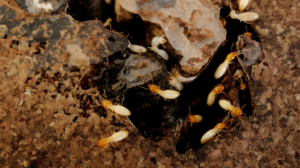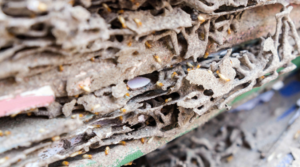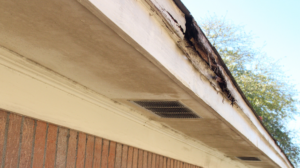Small, wingless insects known as silverfish are common in houses and other structures. Their name is derived from the fish-like movement they exhibit and their long, slender bodies. Silverfish may not be harmful to people, but they can seriously harm property, and they may also raise certain health issues.
Books and papers might become damaged or destroyed because silverfish like to eat glue and paper.
Wallpaper damage – Silverfish can consume the adhesive holding wallpaper in place, which can result in peeling or discoloration of the wallpaper.
Fabrics – Silverfish can eat through fabrics and garments, producing holes or other damage in the process.
Furniture damage – Silverfish may also consume the glue and finishes applied to furniture, resulting in surface or structural damage.
Allergies – Individuals who are allergic to silverfish may get sneezing fits, itchy skin, or skin rashes as a result.
Asthma – When exposed to silverfish, asthmatics may notice an aggravation of their symptoms.
Food contamination – Silverfish in a pantry or kitchen can contaminate food, making it dangerous to eat.
Disease transmission – The transmission of several diseases, like typhus, may also be linked to the presence of silverfish.
Psychological anguish – For some people, having silverfish in their property can lead to psychological distress.
Other pest invasions – Silverfish infestations can also draw in difficult-to-control pests like roaches and ants.
In conclusion, silverfish can seriously harm property and may also be linked to many health issues.
It’s critical to recognize the warning symptoms of a silverfish infestation and take action to eradicate them from your home or structure and prevent further infestation.









